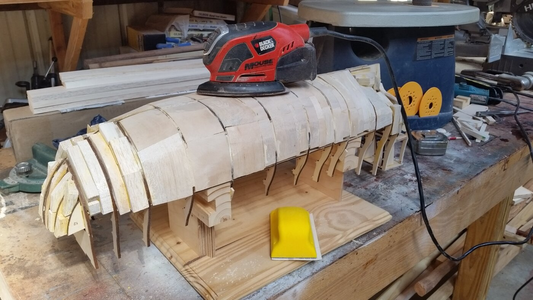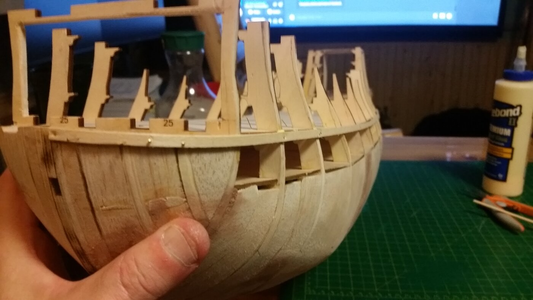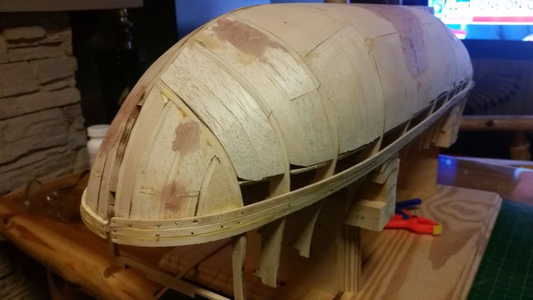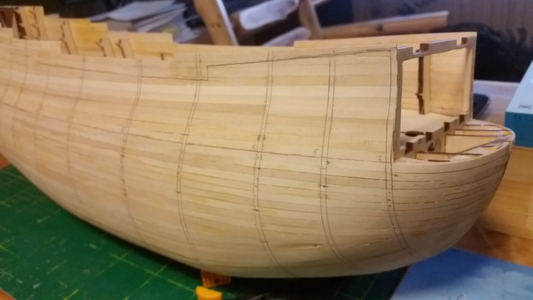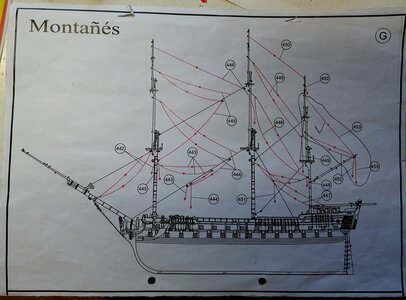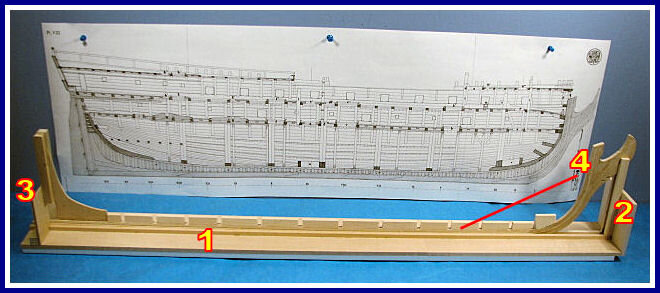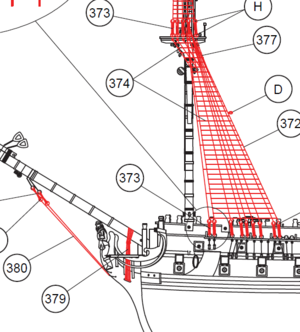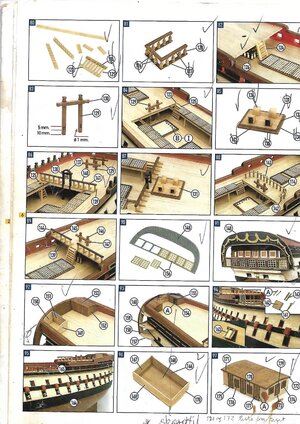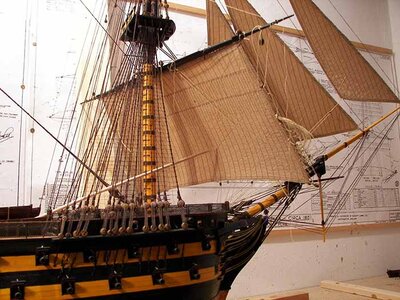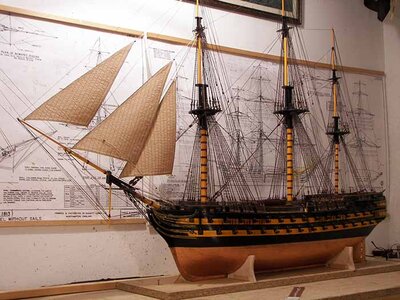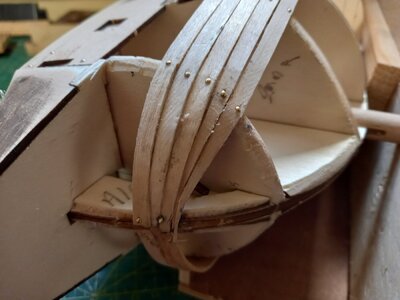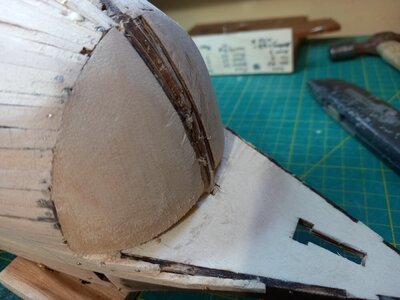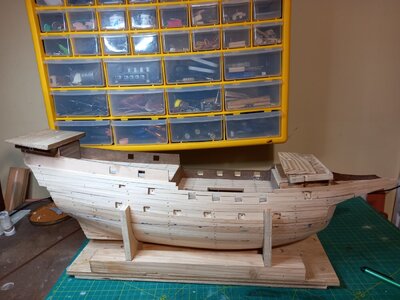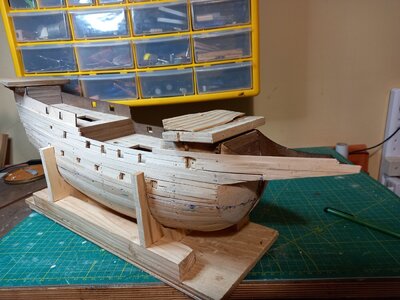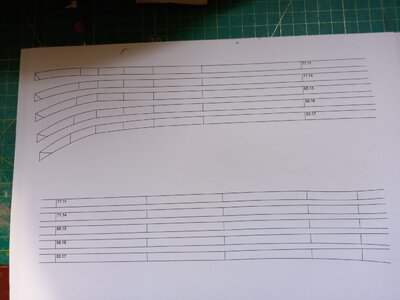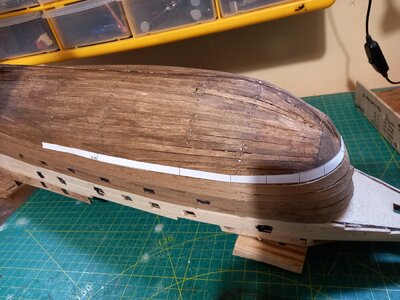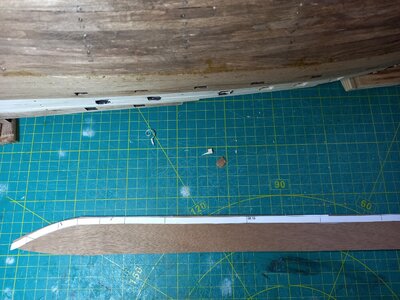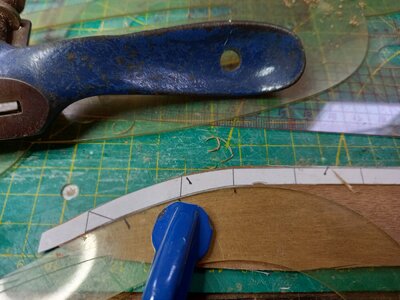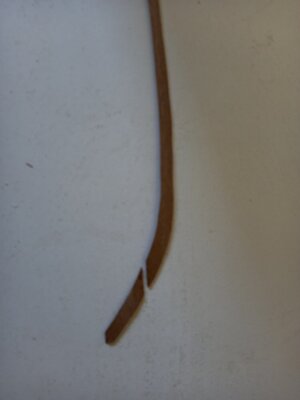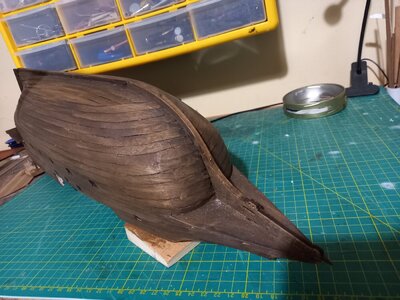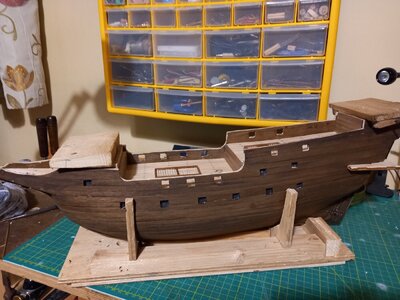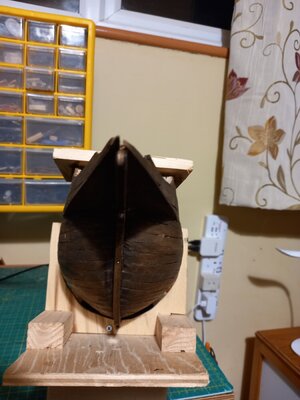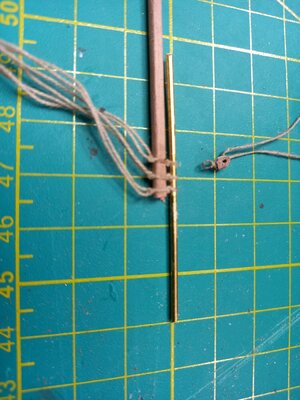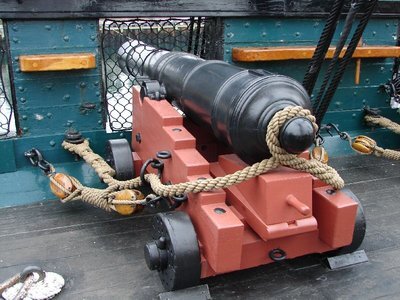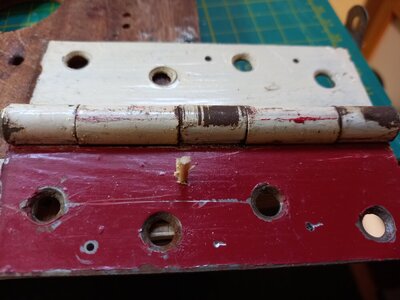In choosing this build I decided to return to OcCre after excursions to Caldercraft, Corel and Korabel
I like OcCre kits.
They include generous quantities of good quality materials and fittings
The instructions, in the form of coloured pictures of each stage of the build, are very easy to follow.
The limited amount of text required is provided in several languages and the English version is well written.
I have recently learned (from SOS) that full instructions can be downloaded as a pdf file from the OcCre website. I have done that.
The rigging thread is very user friendly: the knots stay knotted and can be secured with a dot of PVA glue. (some
other kits use synthetic thread that seems to need CA glue to secure)
The small fittings come in a useful subdivided plastic box. Two of these from earlier builds have been in constant use since.
This model is very similar to the Golden Hind: the first grown up model I built a few years ago. It will be of personal interest to recall memories of that build to see how acquired experience and an abundance of tools compare.
It seems slightly incongruous that I am building a Spanish kit of Revenge given its history!
I will skip the unpacking part of this log as there are several equivalent examples elsewhere on SOS.
Before initial assembly I recorded measurements of the bulkhead beam width at various heights above the keel to provide input data for a computer program to model the hull shape and design the second layer planking profiles.
The first layer planking is 2mm thick which seems excessively robust (1.5mm has been the norm in previous builds) but I suppose it will allow for vigorous smoothing before the second stage. As Revenge has fairly bluff bows it deemed a big ask to get these thick planks round to the bow from the first bulkhead - even with soaking and crimping. I did consider stopping at the first bulkhead and filling in the space forward of this with shaped bow blocks. In the end I decided on a different approach. Before fitting the second stage planking it is normal to rub down the first stage planks as they reach the bow and stern to reduce their thickness. I decided that if I did this before applying them they would bend more easily.
The picture below includes a length of wood with a 3mm groove cut with diminishing depth. A plank laid in this groove can be planed off where it protrudes in a controlled manner. The photo shows the model with the first two planks fitted. The required bend at the bow was achieved with no problem.
![Revenge1[1].jpg Revenge1[1].jpg](https://shipsofscale.com/sosforums/data/attachments/324/324760-0fa3276758ce5715399fdba4d7532c34.jpg)
I like OcCre kits.
They include generous quantities of good quality materials and fittings
The instructions, in the form of coloured pictures of each stage of the build, are very easy to follow.
The limited amount of text required is provided in several languages and the English version is well written.
I have recently learned (from SOS) that full instructions can be downloaded as a pdf file from the OcCre website. I have done that.
The rigging thread is very user friendly: the knots stay knotted and can be secured with a dot of PVA glue. (some
other kits use synthetic thread that seems to need CA glue to secure)
The small fittings come in a useful subdivided plastic box. Two of these from earlier builds have been in constant use since.
This model is very similar to the Golden Hind: the first grown up model I built a few years ago. It will be of personal interest to recall memories of that build to see how acquired experience and an abundance of tools compare.
It seems slightly incongruous that I am building a Spanish kit of Revenge given its history!
I will skip the unpacking part of this log as there are several equivalent examples elsewhere on SOS.
Before initial assembly I recorded measurements of the bulkhead beam width at various heights above the keel to provide input data for a computer program to model the hull shape and design the second layer planking profiles.
The first layer planking is 2mm thick which seems excessively robust (1.5mm has been the norm in previous builds) but I suppose it will allow for vigorous smoothing before the second stage. As Revenge has fairly bluff bows it deemed a big ask to get these thick planks round to the bow from the first bulkhead - even with soaking and crimping. I did consider stopping at the first bulkhead and filling in the space forward of this with shaped bow blocks. In the end I decided on a different approach. Before fitting the second stage planking it is normal to rub down the first stage planks as they reach the bow and stern to reduce their thickness. I decided that if I did this before applying them they would bend more easily.
The picture below includes a length of wood with a 3mm groove cut with diminishing depth. A plank laid in this groove can be planed off where it protrudes in a controlled manner. The photo shows the model with the first two planks fitted. The required bend at the bow was achieved with no problem.
![Revenge1[1].jpg Revenge1[1].jpg](https://shipsofscale.com/sosforums/data/attachments/324/324760-0fa3276758ce5715399fdba4d7532c34.jpg)





